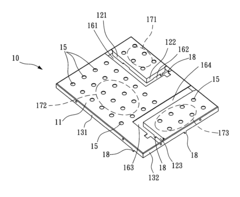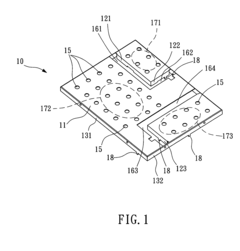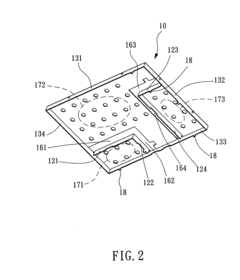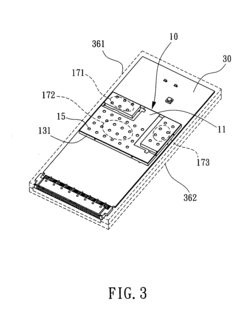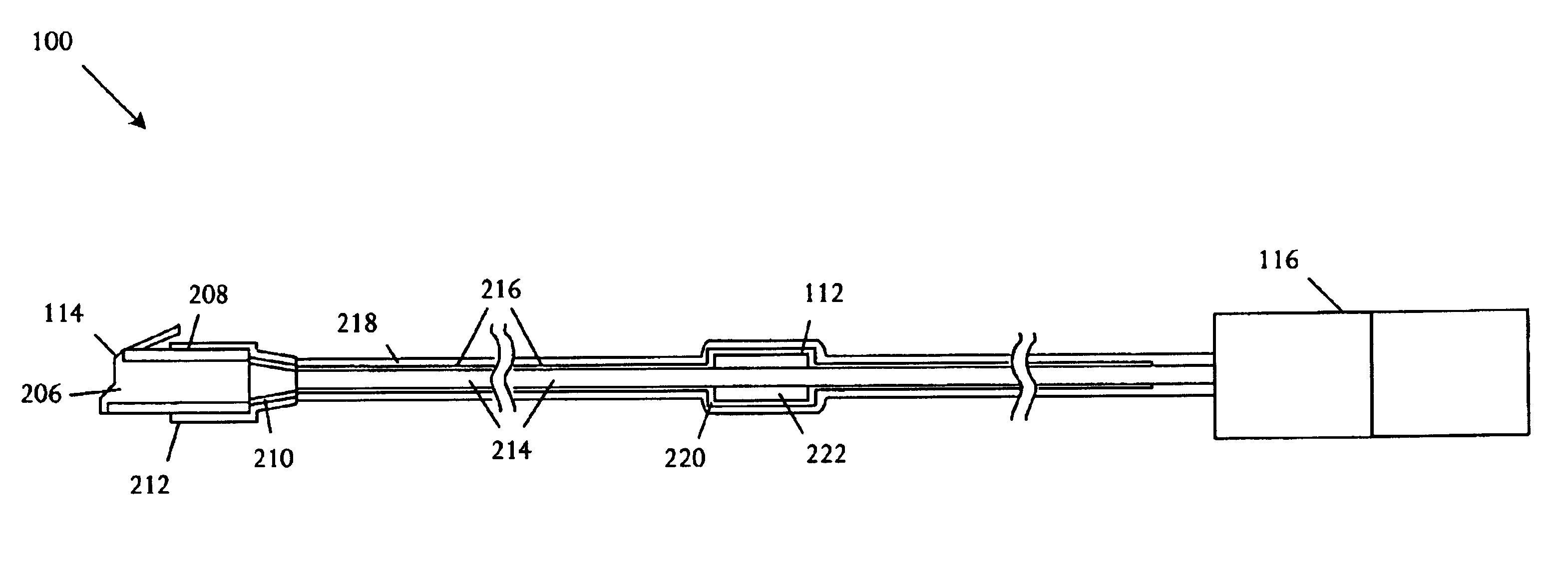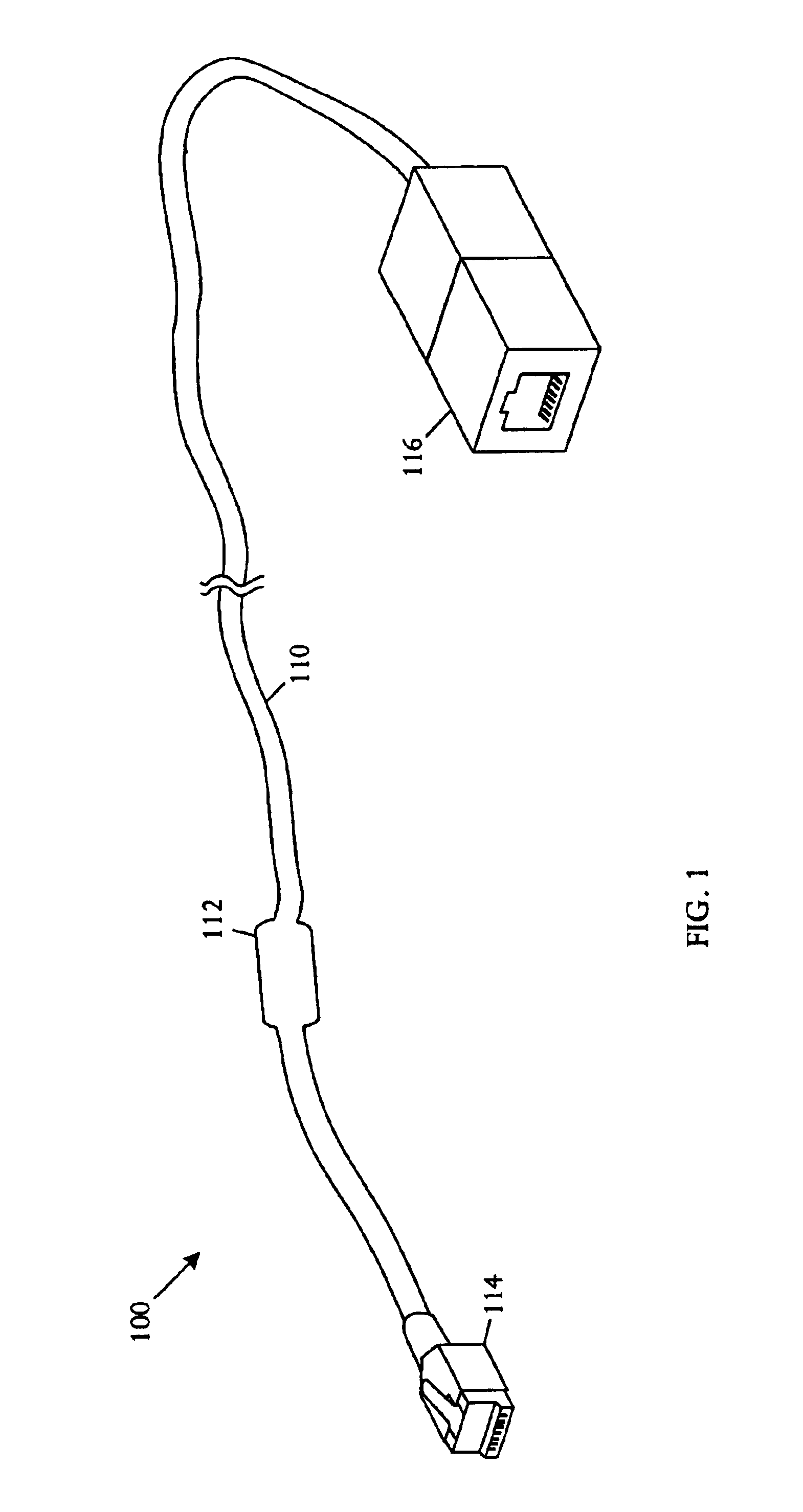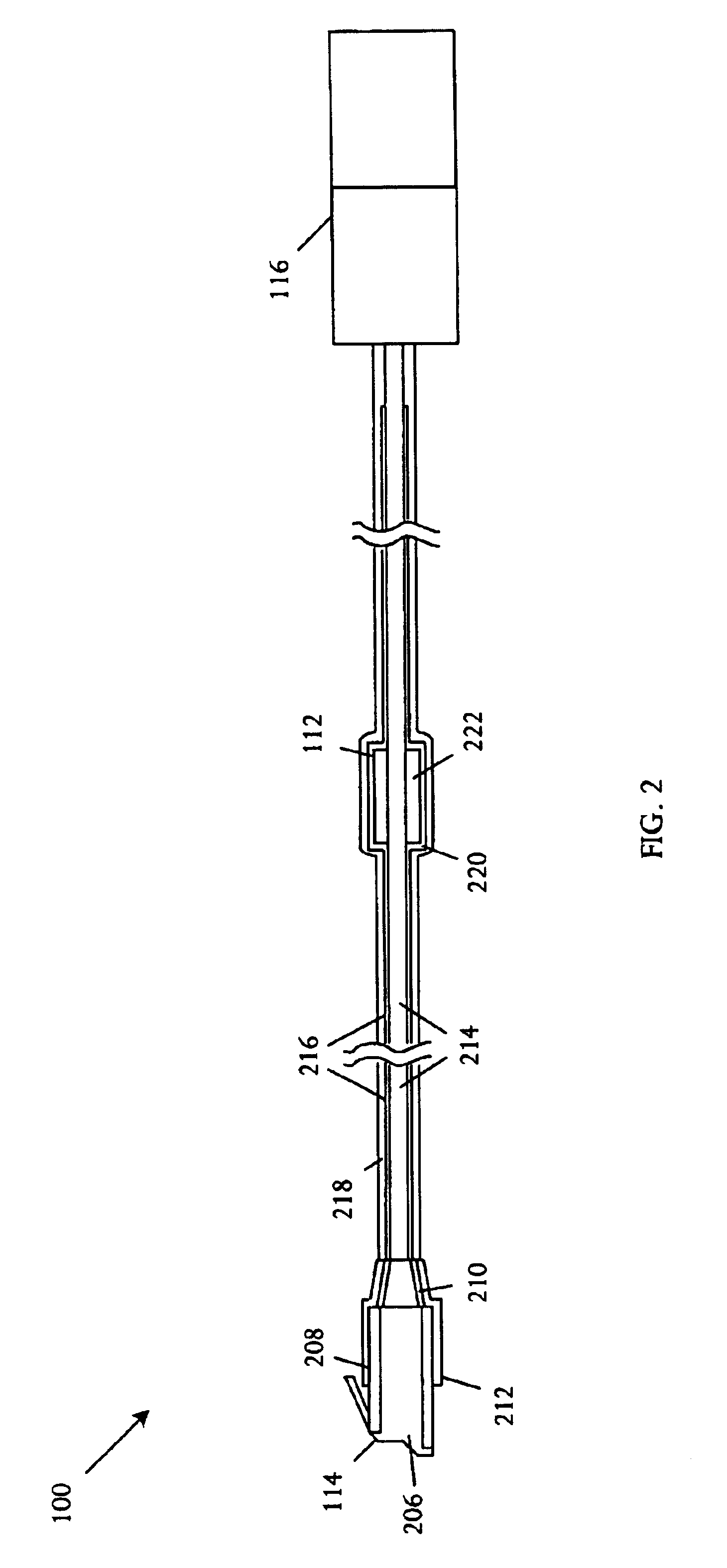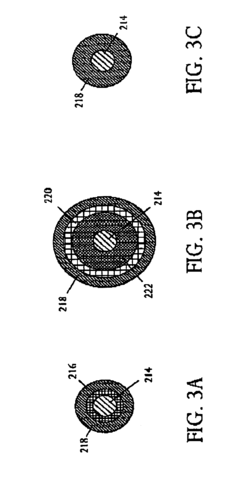How to Reduce Interference in Electromagnetic Wave Systems?
EMI Reduction Background and Objectives
Electromagnetic interference (EMI) has been a persistent challenge in the field of electromagnetic wave systems since the early days of radio communication. As technology has advanced, the proliferation of electronic devices and wireless systems has exacerbated the issue, making EMI reduction a critical area of research and development. The evolution of EMI reduction techniques has been closely tied to the progress in electronics, telecommunications, and materials science.
The primary objective of EMI reduction is to minimize unwanted electromagnetic emissions and enhance the immunity of electronic systems to external interference. This goal has become increasingly important as electronic devices become more compact and operate at higher frequencies. The need for effective EMI reduction strategies spans across various industries, including consumer electronics, automotive, aerospace, and medical devices.
Over the years, the approach to EMI reduction has shifted from reactive measures to proactive design strategies. Early efforts focused on shielding and filtering techniques applied after the design phase. However, as the complexity of electronic systems increased, it became evident that EMI considerations needed to be integrated into the initial design process. This shift has led to the development of advanced materials, innovative circuit designs, and sophisticated simulation tools for predicting and mitigating EMI issues.
The technological trajectory of EMI reduction has been marked by several key milestones. The introduction of ferrite materials for EMI suppression in the mid-20th century was a significant breakthrough. Subsequently, the development of conductive polymers and metamaterials opened new avenues for EMI shielding. In recent years, the advent of spread spectrum techniques and adaptive interference cancellation algorithms has revolutionized EMI reduction in wireless communication systems.
Looking ahead, the future of EMI reduction is likely to be shaped by emerging technologies such as 5G networks, Internet of Things (IoT) devices, and autonomous vehicles. These advancements will require more sophisticated EMI reduction strategies to ensure reliable operation in increasingly crowded electromagnetic environments. The integration of artificial intelligence and machine learning algorithms for real-time EMI mitigation is an exciting frontier that holds promise for addressing future challenges in this field.
As we delve deeper into the technical aspects of EMI reduction, it is crucial to understand the multifaceted nature of the problem and the interdisciplinary approach required for effective solutions. The ongoing research and development in this area aim to push the boundaries of electromagnetic compatibility, enabling the coexistence of diverse electronic systems in our increasingly connected world.
Market Demand for EMI Mitigation Solutions
The market demand for Electromagnetic Interference (EMI) mitigation solutions has been steadily growing due to the increasing complexity and density of electronic systems across various industries. As wireless technologies continue to proliferate and electronic devices become more compact, the need for effective EMI reduction strategies has become paramount.
In the telecommunications sector, the rollout of 5G networks has created a significant demand for EMI mitigation solutions. The higher frequencies used in 5G systems are more susceptible to interference, necessitating advanced shielding and filtering techniques. This has led to a surge in demand for specialized EMI suppression components and materials designed for high-frequency applications.
The automotive industry has emerged as another major driver for EMI mitigation solutions. With the rise of electric and hybrid vehicles, along with the integration of advanced driver assistance systems (ADAS), the complexity of automotive electronics has increased dramatically. This has created a pressing need for EMI reduction technologies to ensure the reliable operation of critical safety systems and to meet stringent electromagnetic compatibility (EMC) regulations.
Consumer electronics manufacturers are also seeking innovative EMI mitigation solutions to address the challenges posed by the miniaturization of devices and the integration of multiple wireless technologies. Smartphones, wearables, and IoT devices require sophisticated EMI suppression techniques to maintain signal integrity and comply with regulatory standards.
In the aerospace and defense sectors, the demand for EMI mitigation solutions remains robust. These industries require highly reliable electronic systems that can operate in harsh electromagnetic environments. As a result, there is a growing market for advanced EMI shielding materials, filters, and design techniques that can protect sensitive equipment from interference.
The healthcare industry has also witnessed an increased demand for EMI mitigation solutions. Medical devices, particularly those used in diagnostic imaging and patient monitoring, are highly susceptible to electromagnetic interference. This has led to a market for specialized EMI suppression components and shielding materials that can ensure the accuracy and reliability of medical equipment.
Industrial automation and control systems represent another significant market for EMI mitigation solutions. As factories become more connected and reliant on wireless communication, the need to protect sensitive control systems from electromagnetic interference has grown. This has driven demand for robust EMI suppression techniques in industrial environments.
The global market for EMI shielding is projected to experience substantial growth in the coming years, driven by these diverse industry needs. Manufacturers of EMI mitigation solutions are focusing on developing innovative materials and components that offer improved performance, reduced size, and cost-effectiveness to meet the evolving demands of various sectors.
Current EMI Challenges in Wave Systems
Electromagnetic Interference (EMI) poses significant challenges in modern wave systems, affecting the performance and reliability of various electronic devices and communication systems. As technology advances and the electromagnetic spectrum becomes increasingly crowded, the complexity of EMI issues continues to grow.
One of the primary challenges in current EMI management is the proliferation of wireless devices and the increasing density of electronic components in confined spaces. This trend leads to a higher likelihood of interference between different systems, particularly in urban environments and industrial settings. The miniaturization of electronic devices further exacerbates this issue, as smaller form factors often result in reduced shielding effectiveness and increased susceptibility to external electromagnetic fields.
The rapid adoption of 5G technology introduces new EMI challenges. The higher frequencies used in 5G networks can potentially interfere with existing systems, including weather satellites and radar systems. This interference can have far-reaching consequences, affecting critical services such as weather forecasting and aviation safety.
In the automotive industry, the transition to electric and autonomous vehicles presents unique EMI challenges. The high-power electrical systems in electric vehicles generate strong electromagnetic fields that can interfere with sensitive electronic components, potentially compromising vehicle safety and performance. Additionally, the increasing reliance on wireless communication for vehicle-to-vehicle and vehicle-to-infrastructure systems introduces new vulnerabilities to EMI.
The Internet of Things (IoT) ecosystem also contributes to the growing EMI complexity. As billions of connected devices communicate wirelessly, the potential for mutual interference increases dramatically. This is particularly problematic in smart home and industrial IoT applications, where multiple devices operate in close proximity.
Another significant challenge is the management of EMI in medical environments. Modern healthcare facilities rely heavily on electronic medical devices, many of which are sensitive to electromagnetic interference. Ensuring the reliable operation of life-critical equipment in the presence of various EMI sources remains a crucial concern for healthcare providers and medical device manufacturers.
The aerospace and defense sectors face their own set of EMI challenges. Military communication systems must operate reliably in hostile electromagnetic environments, including those with intentional jamming. Similarly, commercial aircraft must maintain robust communication and navigation capabilities while contending with both internal and external sources of EMI.
Addressing these multifaceted EMI challenges requires a comprehensive approach that combines advanced shielding techniques, innovative circuit design, sophisticated signal processing algorithms, and regulatory frameworks. As the electromagnetic landscape continues to evolve, developing effective strategies to mitigate EMI will remain a critical focus for engineers and researchers across various industries.
Existing EMI Reduction Strategies
01 Interference mitigation techniques
Various methods are employed to reduce electromagnetic interference in wave systems. These techniques may include adaptive filtering, signal processing algorithms, and frequency hopping. By implementing these strategies, the overall system performance can be improved, and the impact of unwanted interference can be minimized.- Interference mitigation techniques: Various methods are employed to reduce electromagnetic interference in wave systems. These techniques include adaptive filtering, signal processing algorithms, and frequency hopping. By implementing these strategies, the overall system performance can be improved, and the impact of unwanted signals can be minimized.
- Electromagnetic shielding: Electromagnetic shielding is used to protect sensitive components and circuits from external interference. This involves the use of conductive materials to create barriers that block or attenuate electromagnetic waves. Proper shielding design can significantly reduce the impact of electromagnetic interference on system performance.
- Adaptive antenna systems: Adaptive antenna systems are employed to improve signal quality and reduce interference in electromagnetic wave systems. These systems use smart algorithms to dynamically adjust antenna patterns, beam steering, and signal processing to optimize reception and transmission while minimizing the effects of interfering signals.
- Interference detection and characterization: Advanced techniques are used to detect and characterize electromagnetic interference in wave systems. This includes spectrum analysis, signal classification algorithms, and machine learning approaches. By accurately identifying the nature and source of interference, appropriate mitigation strategies can be implemented more effectively.
- Coexistence strategies for multiple wireless systems: As the number of wireless devices and systems increases, coexistence strategies are crucial for managing interference. These strategies involve frequency planning, time-division multiplexing, and collaborative communication protocols. By implementing these approaches, multiple electromagnetic wave systems can operate in close proximity with minimal mutual interference.
02 Electromagnetic shielding
Electromagnetic shielding is used to protect sensitive components and circuits from external interference. This can involve the use of conductive materials, specialized coatings, or enclosures designed to block or absorb electromagnetic waves. Effective shielding helps maintain signal integrity and reduces the risk of system malfunction due to interference.Expand Specific Solutions03 Adaptive antenna systems
Advanced antenna designs and adaptive beamforming techniques are utilized to mitigate interference in electromagnetic wave systems. These systems can dynamically adjust their radiation patterns to maximize desired signals while minimizing interference from unwanted sources. This approach enhances communication quality and system reliability in challenging electromagnetic environments.Expand Specific Solutions04 Interference detection and characterization
Sophisticated algorithms and sensing techniques are employed to detect and characterize electromagnetic interference. This includes spectrum analysis, signal classification, and real-time monitoring of the electromagnetic environment. By accurately identifying interference sources, appropriate countermeasures can be implemented to maintain system performance.Expand Specific Solutions05 Coexistence strategies for multiple wireless systems
As the number of wireless devices and systems increases, coexistence strategies are developed to manage interference between different technologies operating in the same frequency bands. This involves coordination mechanisms, dynamic spectrum access, and intelligent resource allocation to ensure multiple systems can operate effectively without causing harmful interference to each other.Expand Specific Solutions
Key Players in EMI Mitigation Industry
The electromagnetic wave interference reduction market is in a mature stage, with established players and ongoing innovation. The global market size for electromagnetic compatibility (EMC) solutions is projected to reach several billion dollars by 2025, driven by increasing electronic device complexity and stringent regulations. Technologically, solutions range from basic shielding to advanced active cancellation systems. Companies like Sony, Samsung, and NEC are at the forefront, leveraging their expertise in consumer electronics and telecommunications. Emerging players such as Dexerials and Realtek Semiconductor are also making significant contributions, particularly in specialized EMC components and integrated circuit solutions. The competitive landscape is characterized by a mix of large conglomerates and niche specialists, with ongoing research and development efforts focused on miniaturization, cost-effectiveness, and adaptability to new wireless technologies.
Samsung Electronics Co., Ltd.
3M Innovative Properties Co.
Core EMI Suppression Technologies
- A single EMI shielding assembly with a metal plate featuring slots and wall components formed by stamping, which divides the circuit board into zones, preventing EMI between components by using electromagnetic wave-impenetrable materials and extending along a horizontal plane with predetermined heights, thereby isolating different zones and reducing cross-component interference.
- A cable extension comprising a conductive cable core, a filter, and a cable shield, where the filter is positioned between the connectors to attenuate EMI emissions, allowing for the use of existing infrastructure while meeting global standards, and including a ferrite filter and shielded connectors to isolate and reduce noise.
EMC Standards and Regulations
Electromagnetic Compatibility (EMC) standards and regulations play a crucial role in reducing interference in electromagnetic wave systems. These standards are developed and enforced by various international and national organizations to ensure that electronic devices can function without causing or experiencing undue electromagnetic interference.
The International Electrotechnical Commission (IEC) is a key player in establishing global EMC standards. Their IEC 61000 series provides comprehensive guidelines for electromagnetic compatibility, covering aspects such as emission limits, immunity requirements, and testing methods. These standards are widely adopted and form the basis for many regional and national regulations.
In the United States, the Federal Communications Commission (FCC) enforces EMC regulations through its Part 15 rules. These rules set limits on the electromagnetic emissions of electronic devices and require manufacturers to certify their products before market release. The FCC regulations are particularly stringent for devices operating in licensed frequency bands.
The European Union has established the EMC Directive (2014/30/EU) as part of its CE marking requirements. This directive mandates that all electronic equipment sold within the EU must meet specific EMC standards, ensuring a harmonized approach across member states. Manufacturers must demonstrate compliance through testing and documentation before affixing the CE mark to their products.
Military and aerospace applications often require adherence to more stringent EMC standards. In the United States, MIL-STD-461 provides detailed requirements for the control of electromagnetic interference characteristics of subsystems and equipment. This standard is widely used in defense and space industries globally.
Automotive EMC standards, such as CISPR 25 and ISO 11452, address the unique challenges of vehicle electronics. These standards focus on ensuring that various electronic systems within a vehicle can coexist without interference, while also considering external electromagnetic environments.
Compliance with EMC standards and regulations is typically verified through a series of tests conducted in specialized laboratories. These tests evaluate both the emissions produced by a device and its immunity to external electromagnetic disturbances. Common test procedures include radiated and conducted emissions measurements, electrostatic discharge tests, and immunity to radio-frequency fields.
As technology evolves, EMC standards and regulations are continuously updated to address new challenges. The proliferation of wireless devices, the implementation of 5G networks, and the increasing use of high-speed digital circuits all contribute to a more complex electromagnetic environment. Regulatory bodies are working to adapt existing standards and develop new ones to ensure electromagnetic compatibility in these emerging scenarios.
Cost-Benefit Analysis of EMI Solutions
When considering electromagnetic interference (EMI) reduction solutions, a comprehensive cost-benefit analysis is crucial for making informed decisions. The implementation of EMI mitigation techniques often involves significant investments in materials, design modifications, and testing procedures. However, these costs must be weighed against the potential benefits of improved system performance, regulatory compliance, and enhanced product reliability.
One of the primary cost considerations is the selection and integration of EMI shielding materials. High-performance shielding materials, such as metal foils or conductive fabrics, can be expensive, especially when used in large quantities or for complex geometries. Additionally, the process of applying these materials may require specialized equipment or skilled labor, further increasing implementation costs. However, the benefits of effective shielding can be substantial, including reduced electromagnetic emissions, improved signal integrity, and enhanced overall system reliability.
Design modifications to reduce EMI often necessitate additional engineering hours and potential redesigns of existing components or layouts. This can lead to increased development time and costs. However, the long-term benefits of a well-designed EMI-resistant system can outweigh these initial expenses. Improved electromagnetic compatibility can result in fewer field failures, reduced warranty claims, and enhanced customer satisfaction, all of which contribute to long-term cost savings and improved market position.
Testing and certification processes represent another significant cost factor in EMI reduction efforts. Compliance testing for electromagnetic compatibility standards can be expensive and time-consuming, often requiring specialized facilities and equipment. However, these costs are often unavoidable due to regulatory requirements in many industries. The benefit of successful certification is market access and the ability to sell products in regulated environments, which can lead to increased revenue opportunities and competitive advantages.
In some cases, the cost-benefit analysis may favor more advanced EMI reduction techniques, such as active cancellation systems or adaptive filtering. While these solutions typically involve higher initial costs for development and implementation, they can offer superior performance in challenging electromagnetic environments. The benefits of such advanced systems may include extended operational range, improved data transmission rates, and the ability to function in previously unsuitable environments.
It's important to consider the lifecycle costs and benefits of EMI solutions. While some techniques may have higher upfront costs, they can lead to significant long-term savings through reduced maintenance, fewer replacements, and improved system longevity. Conversely, cheaper short-term solutions may result in higher overall costs due to frequent repairs, system downtime, or the need for eventual upgrades.
